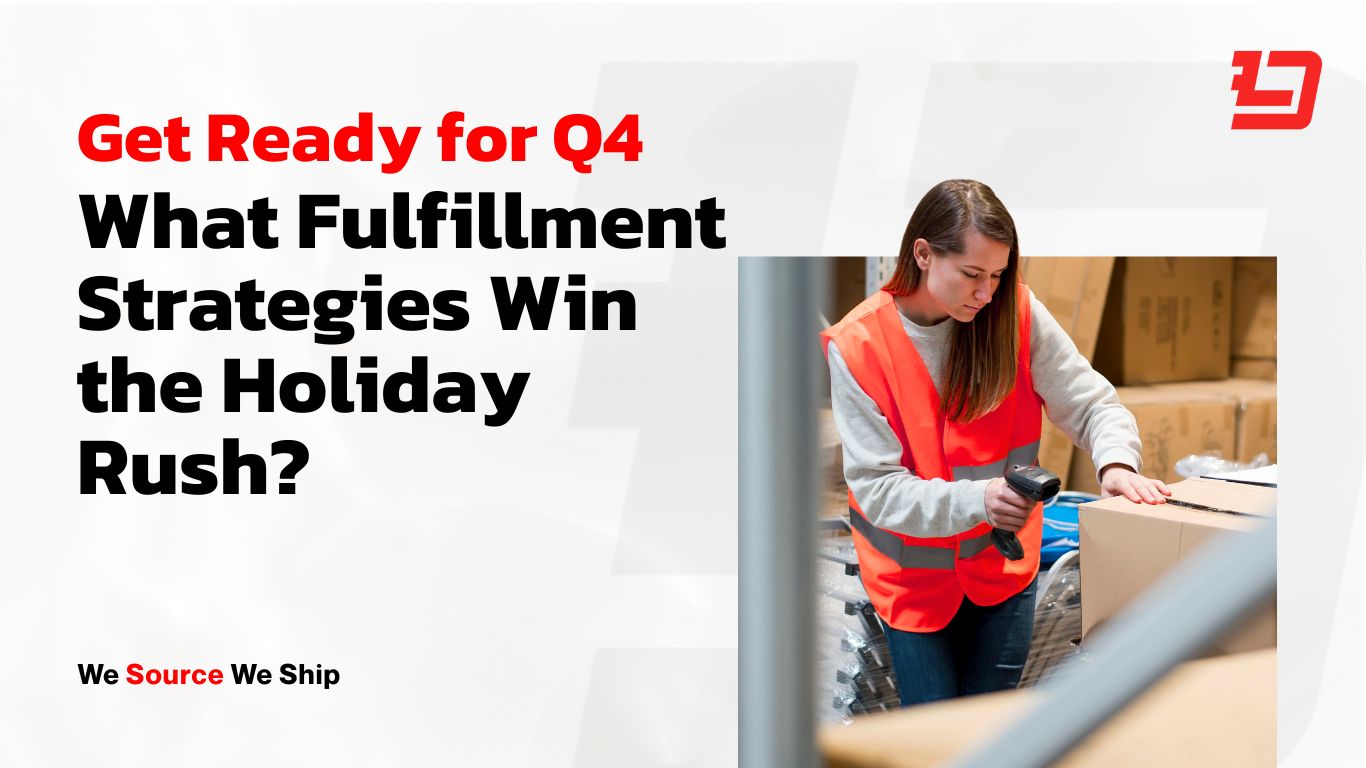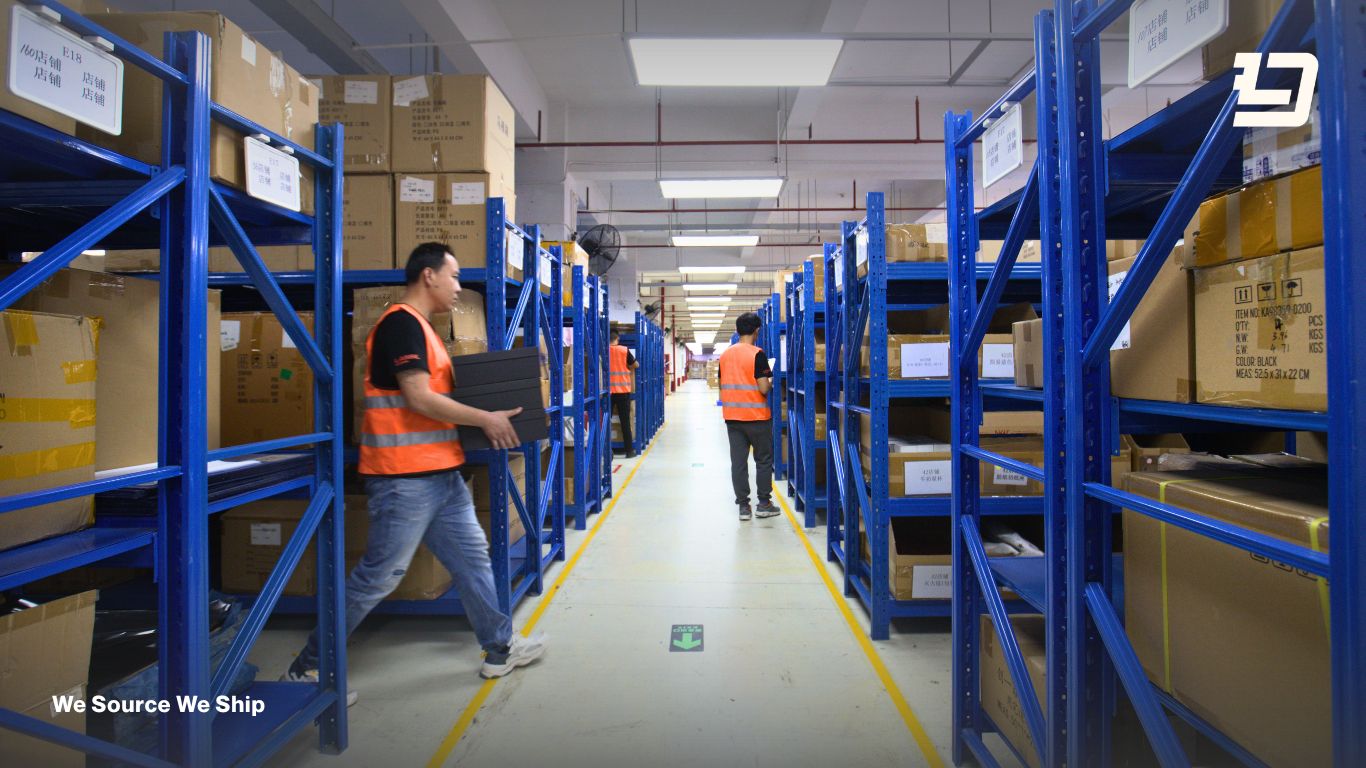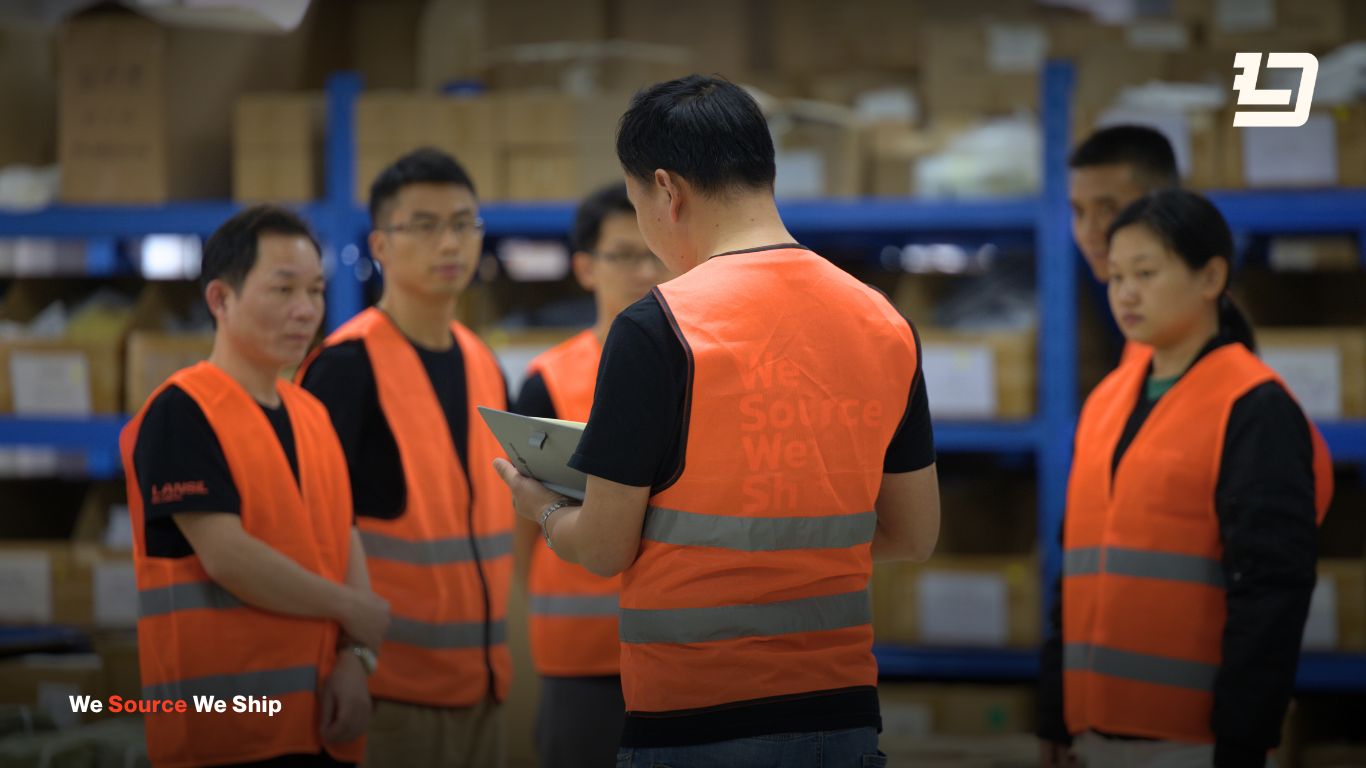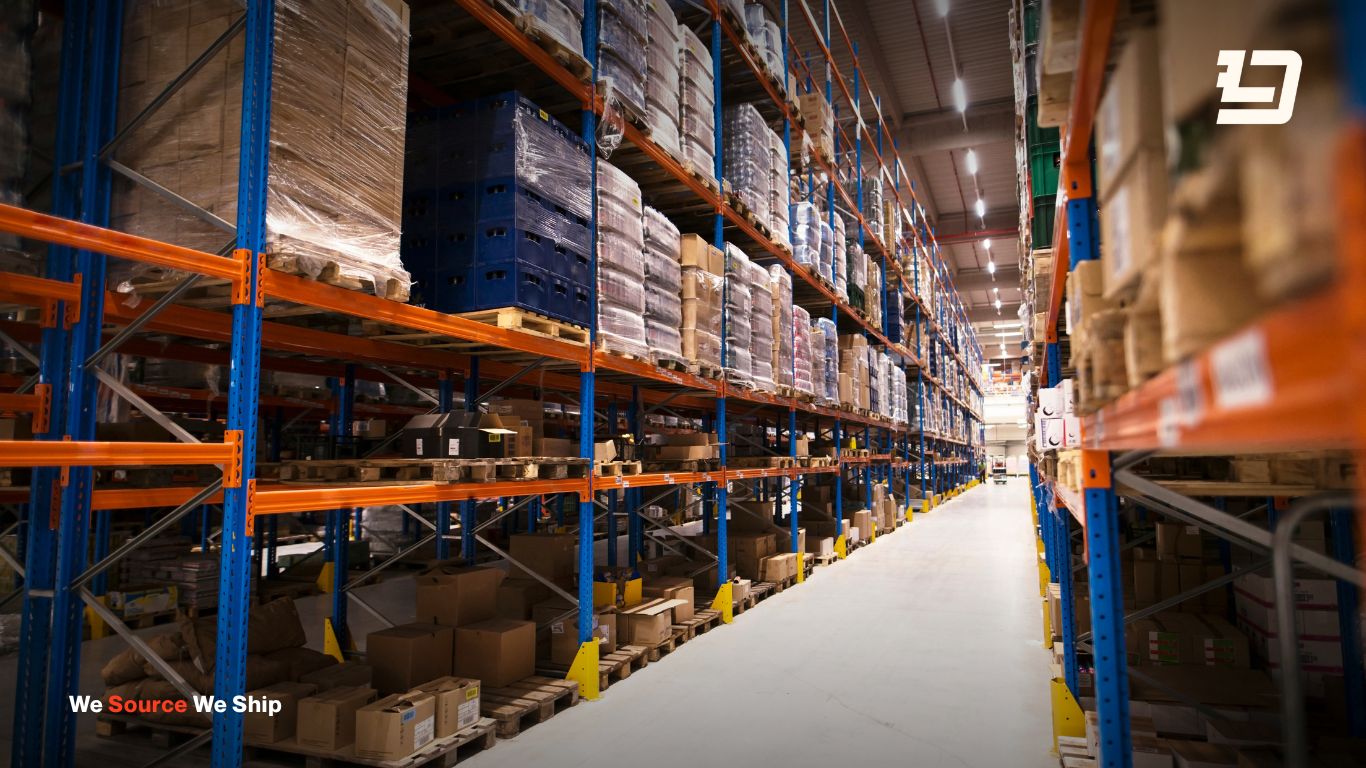The fourth quarter is the busiest time of the year for ecommerce, and it is also the most unforgiving. Online holiday sales in the U.S. reached $241.4 billion in 2024, according to Adobe Analytics, and forecasts expect another 7% growth in 2025 as mobile shopping, early discount events, and global demand continue to rise.
While the market is expanding, so are customer expectations. Shoppers no longer tolerate long delivery windows or unreliable tracking. A single late order in December can permanently shift a customer to a competitor. For brands scaling beyond 20 orders per day, the real test of growth happens in Q4.
Lansil Global works with these scaling ecommerce businesses to stay ahead of holiday demand. With dual U.S. warehouses in Nevada and Pennsylvania supported by a Shenzhen hub, the company helps brands deliver orders in 2 to 4 days within the U.S. while keeping international customers satisfied through reliable China fulfillment.
What Makes Q4 Fulfillment Different?
Q4 isn’t just more orders. It’s a different game:
- Demand spikes fast. Sales volumes often double or triple over weeks as Cyber Week and December gain traction.
- Customer patience is zero. 73 % of U.S. shoppers abandon a brand if delivery takes too long.
- Tariffs & duties bite harder. The 2025 De Minimis changes raise landed costs for smaller shipments. You must plan to avoid margin bleed.
- Returns flood in. For 2024, total industry returns are projected at $890 billion, and retailers expect holiday return rates to be ~17 % higher than average. Some reports even estimate a holiday return rate of ~20.4 %.
- Fraud and abuse matter. In 2024, retailers lost $103 billion to fraudulent or abusive returns.
Without a robust fulfillment strategy, customs delays, tariff surprises, and return chaos can wipe out your Q4 gains.
Strategy 1: Use Dual Fulfillment with U.S. and China Hubs
The best approach for scaling brands is not choosing between U.S. or China fulfillment. It is using both in combination.
U.S. warehouses give American customers the fast, Prime-like delivery experience they expect. The China hub continues to serve international customers with lower storage costs and steady shipping options. Together, they provide the balance needed for Q4 growth.
Example: A skincare brand keeps its 30 best-selling products in U.S. warehouses to meet domestic demand, while slower SKUs and international orders are fulfilled from the Shenzhen hub. U.S. customers receive their packages in as little as two days, and European and Canadian buyers avoid inflated shipping costs.
U.S. Fulfillment vs. China
| Fulfillment Model | Customers Served | Avg. Delivery Time | Cost Efficiency | Best For | Risks if Ignored |
|---|---|---|---|---|---|
| U.S. Warehouse | U.S. customers | 2–4 days | Higher storage, lower shipping | Fast-moving SKUs, domestic best-sellers | Lost sales from long U.S. shipping times |
| China Hub | Global customers | 7–15 days | Lower storage, higher shipping | Long-tail SKUs, international orders | Tariffs and customs bottlenecks |
| Hybrid Model | U.S. + Global | Balanced | Optimized mix | Scaling brands that want speed and margin | Added complexity if not managed well |
Strategy 2: Stock Earlier and Smarter
Once the fulfillment model is set, the next priority is inventory planning. Brands that stock early secure the best shipping rates and ensure their warehouses are prepared for spikes in demand. Brands that wait often pay double for emergency replenishment or lose sales entirely.
Best practices for Q4 inventory planning include:
- Confirm supplier orders by July or August to account for factory delays.
- Reserve ocean freight space by late summer before rates surge.
- Stock U.S. warehouses in September to build a safety buffer.
- Track sell-through weekly in October through December and use small air shipments only when needed.
Example: An electronics brand shipped 80 percent of its Q4 stock by ocean freight in September, locking in affordable rates. When two accessories went viral on social media in November, it used air freight only for those SKUs. By planning early, it protected margins and avoided stock-outs.
Strategy 3: Prepare for Returns Before They Pile Up
Returns are unavoidable in holiday ecommerce. Without a streamlined system, they overwhelm warehouses and erode profits.
The best way to manage returns is to set up a U.S. returns center, generate prepaid return labels in advance, and restock re-sellable items as quickly as possible. Brands should also analyze return data to spot trends, such as sizing problems or product defects, so issues do not repeat in the following season.
Example: A footwear brand that worked with Lansil Global reduced its average return processing time from 14 days to 5 days by using U.S. returns processing. Customers received faster refunds, and the brand recovered thousands of dollars by restocking items that would have otherwise been written off.
Strategy 4: Balance Air and Ocean Freight
Every year, brands struggle with whether to rely on air or ocean shipping. Air is fast but costly. Ocean is affordable but slow. The best approach is to combine them: bulk shipments by ocean early in the season and emergency restocks by air only when necessary.
Shipping Mode Trade-Offs
| Shipping Mode | Transit Time (China to U.S.) | Cost per kg | Best Use Case | Risk if Misused |
|---|---|---|---|---|
| Air Express | 5–7 days | High | Emergency stock, best-sellers | Margin loss if overused |
| Ocean LCL | 25–35 days | Low | Bulk replenishment for medium SKUs | Late arrivals if shipped too close to peak |
| Ocean FCL | 20–30 days | Lowest | Palletized large shipments | Storage costs if demand is overestimated |
Example: A home décor brand shipped its seasonal products in full containers by September. When demand for a trending product surged in November, it only used air freight for that single SKU. This saved costs while keeping customers happy.
Strategy 5: Monitor Daily Performance with Real-Time Data
Weekly reports are not enough in Q4. Brands need daily tracking to adjust quickly.
The most important metrics include inventory levels per warehouse, courier performance by U.S. region, SKU-specific return rates, and landed cost changes with tariffs and surcharges.
Lansil Global provides integrated tracking across its Shenzhen hub and U.S. warehouses. This gives brands visibility and control so they can adjust fulfillment strategies daily rather than waiting for problems to pile up.
When should I switch to a U.S. fulfillment partner?
If you ship more than 20 daily orders to the U.S. or are losing customers because of slow delivery, now is the right time.
Can I combine U.S. and China fulfillment?
Yes. Hybrid fulfillment is the most efficient model for brands that want both speed and margin control.
What return rate should I expect in Q4?
On average, 15 to 20 percent of holiday orders are returned. Brands that manage returns in the U.S. can reduce refund complaints and recover resale value faster.
What ROI can I expect from hybrid fulfillment?
Most brands reduce shipping time by 70 percent and see customer satisfaction rise, which translates to higher repeat purchases.
Why Fulfillment Partnerships Matter in Q4
Scaling ecommerce brands face challenges in Q4 that go beyond storing products. Tariffs can eat into margins, stock must be balanced between U.S. and international markets, and customer expectations for speed and reliability leave little room for error. The brands that perform well are the ones that prepare early, diversify fulfillment, and stay flexible when demand shifts.
Working with an experienced partner makes these adjustments easier. Companies that combine U.S. warehouse coverage with international hubs typically reduce shipping delays, avoid tariff surprises, and gain the visibility needed to manage spikes in demand.
Lansil Global supports this model through its China hub and dual U.S. warehouses, paired with direct factory sourcing and in-house quality control. Having shipped more than 15 million packages across 200 countries, the company provides infrastructure that allows brands to keep pace during the holiday rush without losing control of costs or service quality.
Q4 is the quarter that decides whether customers stay loyal or move on. Brands that plan inventory early, combine U.S. and China fulfillment, manage returns, and track performance daily come out ahead.
For those preparing for 2025, securing capacity now is key. Lansil Global’s U.S. warehouses and China hub give ecommerce brands the speed, flexibility, and reliability needed to handle the holiday rush.
Learn more about Lansil Global and get your Q4 strategy in place.








